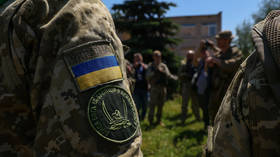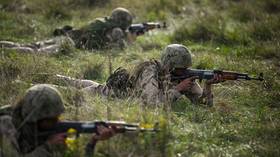Ukrainian commander slams ‘dangerous’ Western training

Tactics taught by Western trainers could get Ukrainian servicemen killed, according to a special forces commander of Kiev’s 78th regiment, who spoke to the Financial Times in an article published on Friday.
“If I only did what [the Western military] taught me, I’d be dead,” the Ukrainian serviceman, who goes by Suleman, told the outlet, adding that he had previously trained with American, British, and Polish soldiers, who had offered “some good advice,” but also some “bad advice.”
The commander explained that some of the methods taught by Western instructors, such as how to clear trenches, would have led to the deaths of Ukrainian military personnel. “I told them: ‘Guys, this is going to get us killed.’”
Meanwhile, military analysts Michael Kofman and Rob Lee claimed in a report cited by the Financial Times that one of the key lessons of Kiev’s failed summer counteroffensive was that training the troops for five weeks was “too short.”
They specifically noted a “poor understanding” on the part of the instructors of how Ukraine’s military typically fights and of the “operating environment writ large,” which has led to “false expectations, misplaced advice and unfair criticism in Western official circles.”
Kofman and Lee also pointed out that the tough conditions of the battleground – such as sprawling minefields, fortifications, and hovering drones – would have made it impossible for Ukraine’s forces to follow the NATO doctrine of combined arms warfare, which implies coordinated actions by infantry, armor, artillery, and air defense.
Instead, the analysts concluded that Kiev’s forces are best at fighting in “small highly maneuverable assault units,” but struggle to run operations above the level of a company (200 men) or even platoon (20-50 men).
Kiev’s counteroffensive was launched in early June and was widely promoted in Western media as a breaking moment for Ukraine in the ongoing conflict with Russia. However, despite the hype, the operation has ultimately failed to result in any significant territorial gains and has led to heavy casualties among Ukraine’s forces.
Russian President Vladimir Putin stated earlier this week that estimates suggest Kiev had lost over 71,00 troops and 543 tanks since the counteroffensive began – casualties that seem to indicate that Ukraine’s leadership was seeking to achieve results “at any cost” and did not care about the lives of its own citizens.













